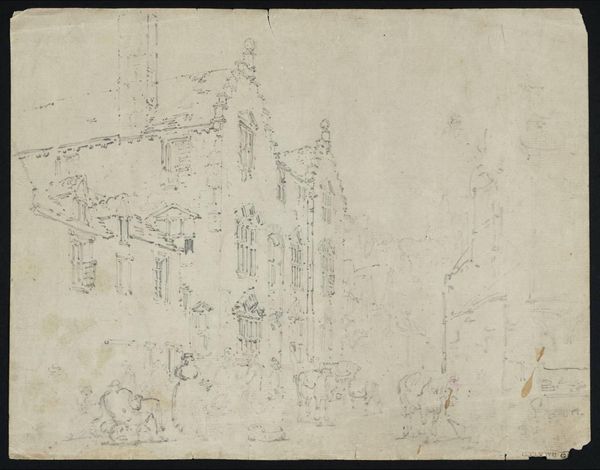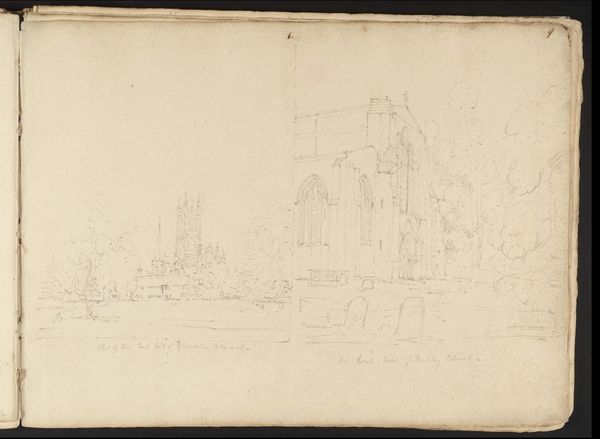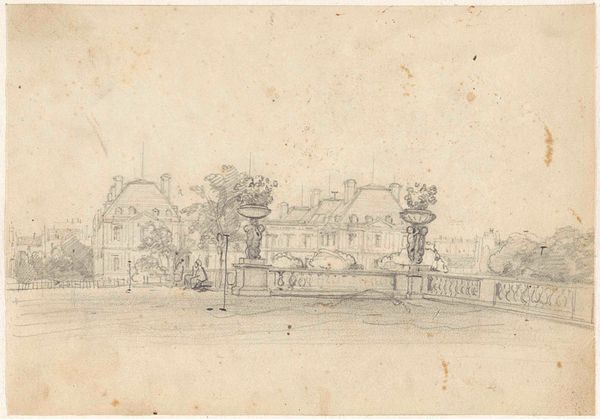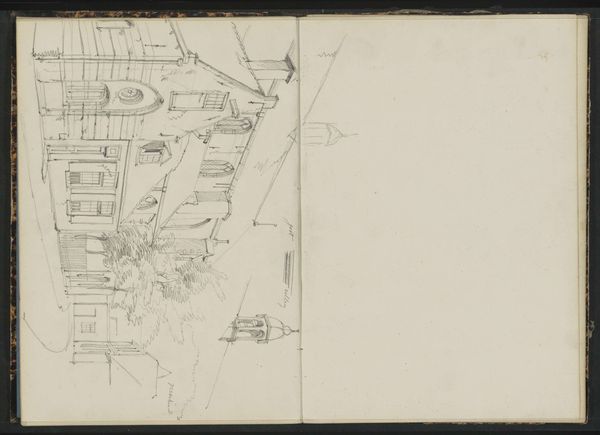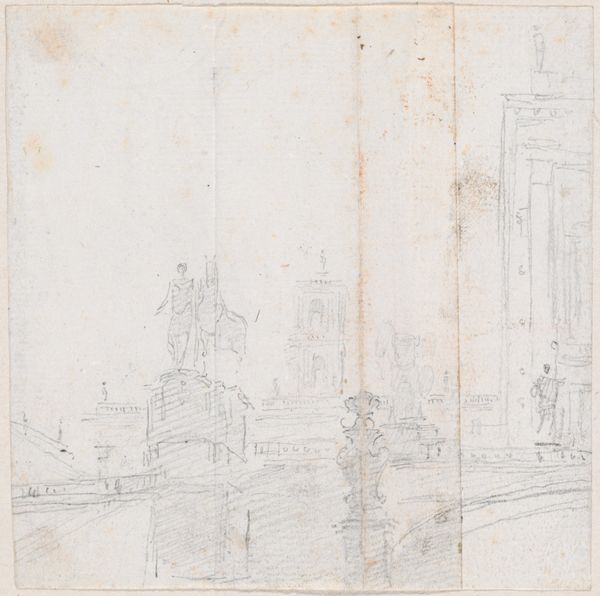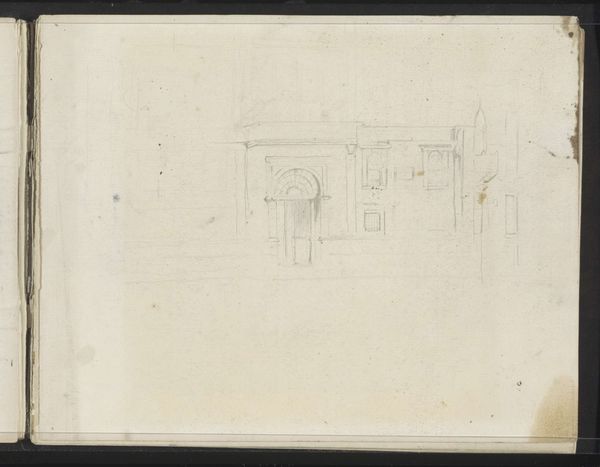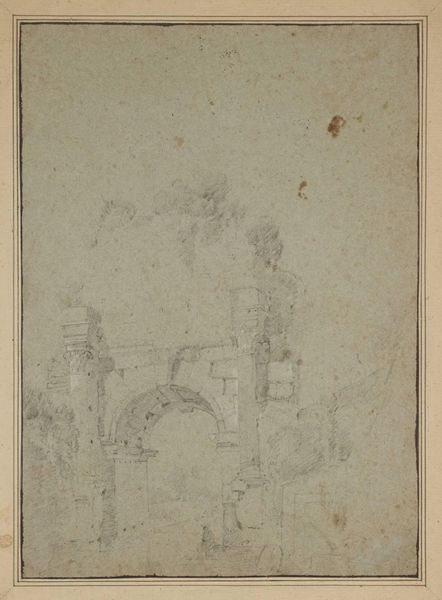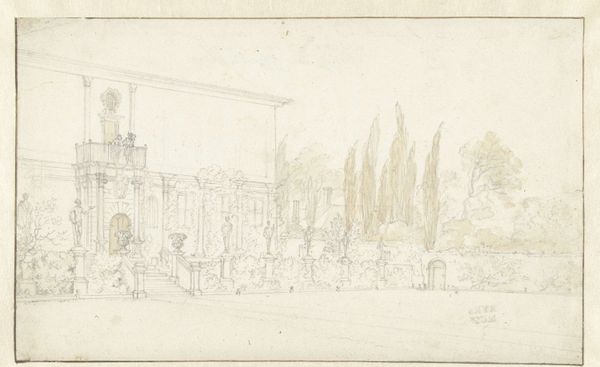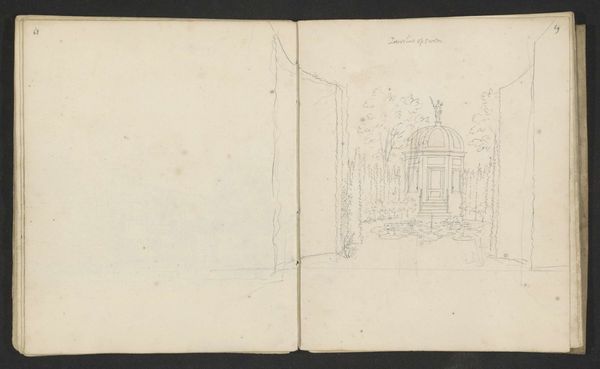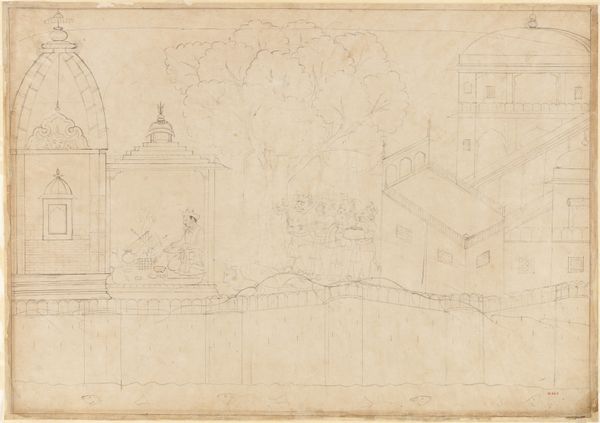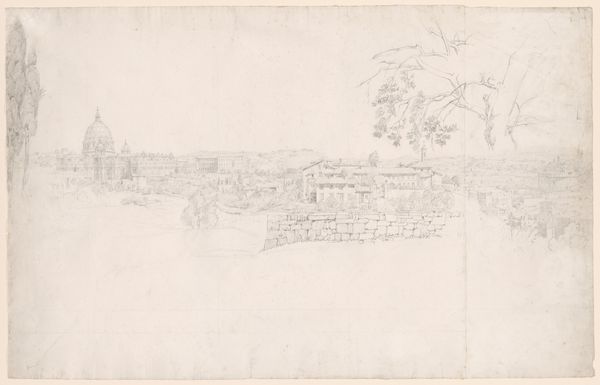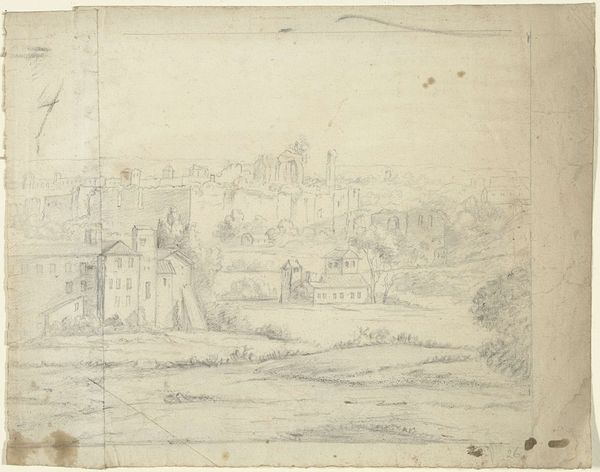
drawing, print, paper, graphite, architecture
#
drawing
# print
#
landscape
#
classical-realism
#
paper
#
romanticism
#
graphite
#
architecture
Dimensions: 188 × 282 mm
Copyright: Public Domain
Curator: We’re looking at “Byland Abbey, Yorkshire,” a graphite drawing rendered around 1820 by William Westall, presently held in the Art Institute of Chicago. Editor: My first thought is—ghostly! It's delicate, almost spectral, the way the abbey emerges from the pale paper. I’m intrigued by the skeletal structure. Curator: Indeed. Note Westall's strategic deployment of line to articulate the ruin's decaying form. The architecture, rendered with an eye toward detail, offers a romanticized perspective on a historic religious site. He emphasizes verticality, drawing the eye upward along the abbey's skeletal remains. Editor: Absolutely. There's a melancholy grandeur. It's as if Westall isn't just showing us stones, but whispering of lost faiths and the relentless march of time. I get a real sense of the Romantic era’s fascination with ruins and nature’s power over human creation. Curator: The drawing exemplifies the aesthetic principles of Romanticism through its subjective depiction of landscape and emphasis on emotion. The detailed ruins reflect an admiration of history and its relationship with nature’s resurgence, a common trope during this time period. Note the meticulous shading suggesting texture and depth, giving solidity to crumbling facades. Editor: It's so subtle! It’s also, dare I say, about light versus shadow, isn’t it? How the light etches out the shapes of stones and emptiness. It’s kind of exhilarating – seeing beauty emerge out of disintegration. It seems so quiet… What’s left behind and now stands as an illustration of the ephemeral. Curator: I agree that Westall achieves considerable effects using only graphite on paper. Editor: For me, this evokes such quiet contemplation of how even these impressive human efforts still eventually fade away… It's beautiful in its own humbling way, don't you think? Curator: Most certainly. It speaks volumes about permanence and impermanence. Editor: I leave now, feeling both a little sad and profoundly peaceful after viewing this artwork. Curator: A truly lasting, spectral artwork.
Comments
No comments
Be the first to comment and join the conversation on the ultimate creative platform.
